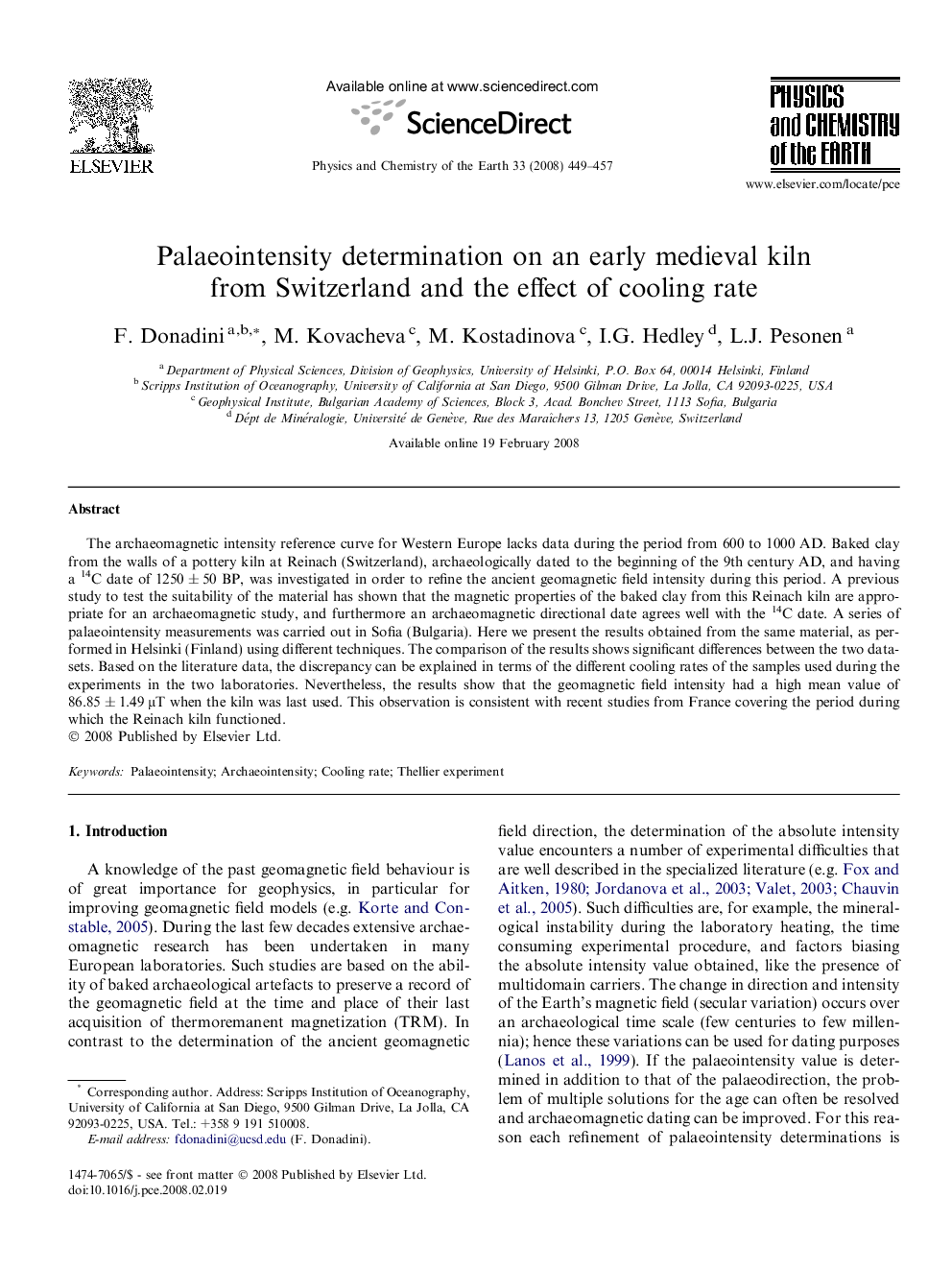| Article ID | Journal | Published Year | Pages | File Type |
|---|---|---|---|---|
| 4722028 | Physics and Chemistry of the Earth, Parts A/B/C | 2008 | 9 Pages |
The archaeomagnetic intensity reference curve for Western Europe lacks data during the period from 600 to 1000 AD. Baked clay from the walls of a pottery kiln at Reinach (Switzerland), archaeologically dated to the beginning of the 9th century AD, and having a 14C date of 1250 ± 50 BP, was investigated in order to refine the ancient geomagnetic field intensity during this period. A previous study to test the suitability of the material has shown that the magnetic properties of the baked clay from this Reinach kiln are appropriate for an archaeomagnetic study, and furthermore an archaeomagnetic directional date agrees well with the 14C date. A series of palaeointensity measurements was carried out in Sofia (Bulgaria). Here we present the results obtained from the same material, as performed in Helsinki (Finland) using different techniques. The comparison of the results shows significant differences between the two datasets. Based on the literature data, the discrepancy can be explained in terms of the different cooling rates of the samples used during the experiments in the two laboratories. Nevertheless, the results show that the geomagnetic field intensity had a high mean value of 86.85 ± 1.49 μT when the kiln was last used. This observation is consistent with recent studies from France covering the period during which the Reinach kiln functioned.
